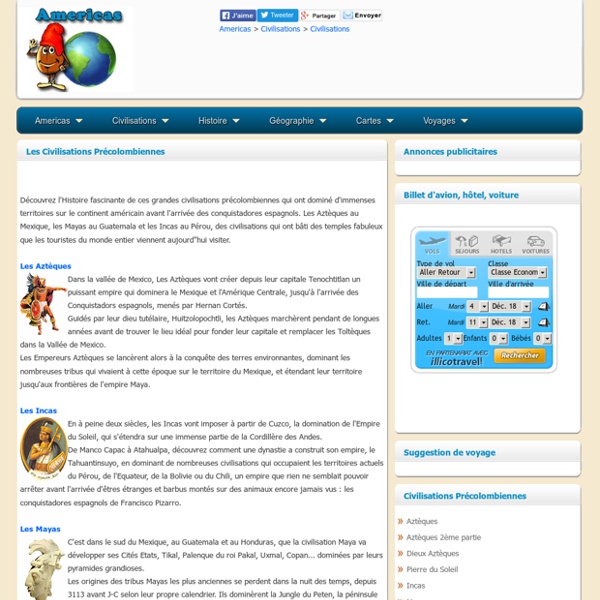Page d'accueil de la Bibliothèque numérique mondiale
Explosions nucléaires il y a des milliers d'années
Mohenjo-Daro explosions nucléaires il y a des milliers d'années villes antiquse décimées par bombe nucléaire Explosions nucléaires, il y a des milliers d'années ! Nous avons été éduqués à concevoir une Histoire de l'humanité une et évolutive; dans cette conception, on pense que notre civilisation est l'aboutissement de progrès depuis des temps archaïques où l'Homme utilisait encore des outils rudimentaires de pierre. On nous parle de certaines grandes civilisations anciennes, comme l'Egypte des pharaon, dont il convient de rappeler que la population était celle des coptes, aujourd'hui chrétiens persécutés, et non pas la population d'arabes musulmans arriérés qu'on y trouve de nos jours. On nous dit que la plus ancienne écriture est celle de Sumer, mais ça dérange énormément lorsqu'on découvre des écritures bien plus anciennes, dont Glozel en France, ou encore celle de la civilisation dite de Fontainebleau, toujours en France, pour ne citer que deux cas, territoralement proches !
education.louvre.fr : Page d'accueil
Nan Madol
Un article de Wikipédia, l'encyclopédie libre. Histoire[modifier | modifier le code] Quoi qu'il en soit, les recherches archéologiques montrent que Nan Madol fut le lieu d'une activité humaine dès le premier ou le IIe siècle de notre ère. Au VIIIe siècle ou IXe siècle, la construction des îlots commence, mais l'architecture mégalitique n'a probablement pas commencé avant le XIIe siècle ou le début du XIIIe siècle. De la tradition orale, peu de choses peuvent être vérifiées sur la construction des mégalithes. Organisation de la cité[modifier | modifier le code] Carte du centre de Nan Madol Selon les données archéologiques, Nan Madol a été un lieu de résidence pour la noblesse et d'activités funéraires présidées par des prêtres. La population de Nan Madol ne devait probablement pas dépasser 1 000 personnes, même si elle a pu doubler occasionnellement. Madol Powe, le secteur mortuaire, comprend 58 îles dans la zone nord de Nan Madol. Approvisionnements[modifier | modifier le code]
Nestor's Cup: National Archaeological Museum
The National Archaeological Museum in Athens was a delightful way to spend the morning in Athens while we waited for our hotel room to be prepared. We toured the entire thing slowly, and were able to reflect on the landscape and the locations for many of the exhibits. By an interesting stroke of luck, there was a special exhibit devoted to Thera, which we had visited just days before. Here are just a few select images from the museum.
Forum antique de Bavay : Musée et site archéologique.
Le forum L'importance de la ville de Bavay (Bagacum dans l'Antiquité), son rôle économique et stratégique durant le Haut-Empire est attestée par les ruines spectaculaires du plus imposant forum de la Gaule (près de trois hectares). Le plan initial est celui d'un forum tripartite clos, très répandu dans la seconde moitié du 1er siècle. Il a été conservé tout au long des réaménagements de la cité. Forum cryptoportique Les vestiges du forum de Bavay datent de 150 après Jésus Christ. Il est l'un des seuls en France qui a pu être entièrement dégagé et sa basilique longue de 98 m est la plus grande découverte à ce jour. Tête d'homme en pierre calcaire (2ème siècle) Une production audiovisuelle en 3 D intitulée "Retour à Bagacum" aborde les différentes étapes de la construction de la cité Gallo-romaine. Chapiteau corinthien Lars familiaris (bronze jaune) Le musée. Mars (bronze jaune 2ème siècle) Céramique noire et barbotine blanche
L'archéologie expérimentale à l'école
sans titre
Un article de Wikipédia, l'encyclopédie libre. Cnossos ou Knossos (en grec ancien Κνωσός / Knôsós) était probablement la capitale de la Crète lors de la période minoenne. La cité abriterait le palais du roi Minos, le plus important des palais minoens et sans doute le plus connu des sites crétois depuis sa découverte en 1878. Cnossos est aujourd'hui le plus grand site archéologique minoen connu. Son aspect et sa taille en font un endroit remarquable et incontournable des civilisations de l'Europe archaïque. Le site reçoit un demi million de visiteurs par an[1]. Découverte[modifier | modifier le code] Les ruines de Cnossos ont été découvertes en 1878 par un antiquaire crétois, Minos Kalokairinos. Le 16 mars 1900, un archéologue britannique, Arthur Evans, achète l'ensemble du site et entame des fouilles de grande envergure. Historique[modifier | modifier le code] Bassin lustral nord Salle du trône du Palais Le site de Cnossos est peuplé depuis le VIIIe millénaire av. Fresque des Dauphins.
VoS - Voice of the Shuttle
Pompei -Guide de visite-
L'émotion ressentie en franchissant la Porta Marina, entrée de la ville de Pompéi fait naître l'envie de partager toutes les merveilleuses découvertes qui se dévoilent à chaque endroit de la ville. Marcher dans les rues, contempler le Forum, les Temples et Théâtres, entrer dans les Maisons et les Villas, imaginer l'animation de la ville... un pèlerinage aux sources de notre civilisation. Contemplari et contemplata aliis iradere
Éducation au Moyen Âge en Occident
Un article de Wikipédia, l'encyclopédie libre. Codex Manesse L'éducation dans la période de la Rome antique était municipale, tout en étant contrôlée par le pouvoir impérial. Avec l'écroulement de l'Empire, en Occident, les écoles ne ferment pas immédiatement. Néanmoins, on peut distinguer plusieurs phases dans le passage de l'éducation antique à l'éducation médiévale. Haut Moyen Âge occidental (Ve ‑ Xe siècle)[modifier | modifier le code] Centres d'études carolingiens entre le VIIIe et le IXe siècle. Ve et VIe siècle[modifier | modifier le code] Le christianisme, devenu une religion officielle de l'Empire romain en 392, n'abolit pas l'école païenne. Moitié du VIe et début du VIIe siècle[modifier | modifier le code] Des différences apparaissent au sein de l'Occident chrétien. VIIe et VIIIe siècle[modifier | modifier le code] Le modèle de l'éducation médiévale se diffuse dans tout l'Occident, notamment grâce aux missions des moines irlandais. Brutalité[modifier | modifier le code] Les étudiants



